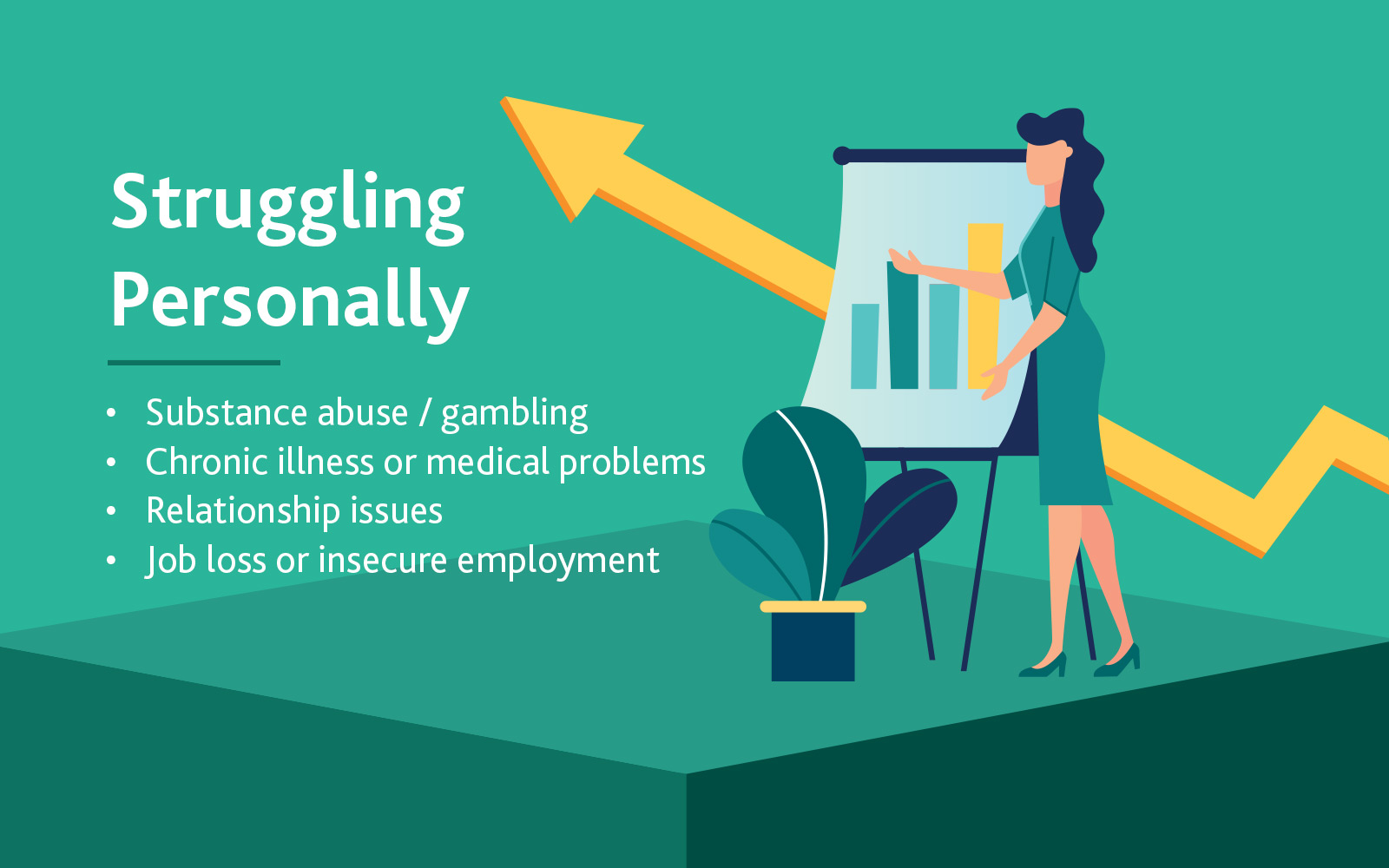Simply asking this question means you’re already on your way to financial health. Take a moment to congratulate yourself — recognizing the perils of unplanned and unexpected costs is a massive milestone and will mark a major turning point in your relationship with debt.
The next stage of your journey begins now. It’s one thing to understand the havoc financial emergencies can cause, but it’s quite another to have the systems and resources in place to successfully navigate the situation when one occurs.
Why is it important to create an emergency fund?
First, a quick refresher: We’re all exposed to sudden changes in our circumstances that can turn our lives upside down. Job loss, illness or separation could cause income to plumet. A major home or auto repair could cause expenses to skyrocket.
Life can become full of stress and panic if we’re unprepared for these sudden events, leaving us wondering where to turn. Many people put off planning for emergencies because they’re healthy, have a stable job, stable relationships, new homes, and reliable vehicles.
But that’s the thing about emergencies: They happen suddenly, and they can happen to anyone.
An emergency fund will prepare you for those unexpected events so you can worry less about money and can focus more on what matters most.
How do you begin?
The first thing you need is a good, well-planned budget, with a clear line item outlining funds to be used for emergencies only. If you’re still rather new to budgeting, don’t fret. The process is straightforward:
- Add all your monthly income sources
- Subtract your fixed expenses (e.g., rent / mortgage, utilities, insurance, etc.)
- Subtract your essential expenses (e.g., groceries, fuel / transportation, childcare, etc.)
- Subtract an amount for discretionary spending (e.g., shopping, leisure, gifts, etc.)
With the remaining funds, you can determine how much will go to retirement, savings, and your emergency fund.
How much money do I need in my emergency fund?
Most financial advisors will recommend your emergency fund have at least enough money to cover your core living (i.e., fixed and essential) expenses for between six and nine months.
A word of caution from the outset: This will be a large number, perhaps uncomfortably so. But it’s also a long-term goal. You don’t have to get there all at once. Building your emergency fund is a process much like saving for retirement, a mortgage down payment or any other large purchase.
- Using the budget you created above, add up all your fixed and necessary expenses (items 1 and 2) and multiply that number by six. This is the minimum goal for your emergency fund.
- Divide the number you calculated above by the amount you’ve determined you can afford to set aside for emergencies each month. This tells you how many months it will take to achieve your minimum emergency savings goal.
- Set regular checkpoints in your calendar to evaluate your progress. There’s no better feeling than seeing your savings grow. The motivation of accomplishing a series of small goals will make the bigger goal feel all that more achievable.
How much of my surplus income should go to my emergency fund each pay?
Financial emergencies are unpredictable and can happen at any time, so it’s a good idea to build that fund fairly quickly. Consider contributing up to half of your surplus funds (i.e., monthly income, less expenses) to the emergency fund until you reach the desired goal.
What’s the difference between emergency, retirement, and savings funds?
- Emergency fund: Six to nine months’ living expenses you’ve saved to navigate a potentially life-changing financial burden such as a job loss, illness, or unexpected repair. You should feel comfortable withdrawing this money if an emergency arises. But contributions must resume once you are able to rebuild the fund to the pre-determined amount.
- Retirement fund: Money that you are saving toward your retirement goals. This will be your primary source of income once you leave the workforce and will need to sustain a reasonable standard of living for anywhere from 15-30 years.
- Savings fund: Money that you are saving to purchase a specific item, service, or experience which you can’t afford to purchase all at once. Common examples include a car, vacation, or mortgage down payment. Feel proud to spend these funds when you’ve reached your goal and inspired to begin saving once again for something else.
Put the remaining 30 percent toward your retirement, and 20 percent toward your other savings goals respectively. Once you have reached your set goal in the emergency fund, you can then divide your surplus funds between your retirement savings and your regular savings. Consider 60 percent of your surplus to retirement and 40 percent of your to your regular savings account.
Set up your savings accounts
It’s important to keep your emergency fund separate from both your regular spending (i.e., chequing) accounts, as well as any retirement funds or savings you’ve also budgeted. Each of these accounts has a specific job; mixing them together can cause confusion and make it easy to use funds outside of their intended purpose.
Consider setting up your emergency fund at a separate institution from where you do your regular banking. This keeps the funds at arms length from your regular spending, but readily available should you need them. If you are able, set up an automatic e-transfer each pay period. That way, the transfer is guaranteed to occur and you won’t even notice you had the money in the first place.
You can also apply this technique to your other savings goals.
Keep track of life changes
Life is constantly changing and so are your financial needs and means. Set time aside every month to review your budget and make sure it is still working for you.
Have your income or expenses increased? Have you purchased that house or car that you were saving for? Are you spending more on necessaries such as food and groceries? Update your emergency fund goals to match these life changes.
Congratulate yourself
With your budget moving along smoothly and your savings accounts all set up, you’re well on your way to being prepared for life’s unexpected changes. Give yourself another pat on the back. Take some time to relax and enjoy the feeling of knowing you’re financially prepared to face whatever challenges come your way.
If you’re experiencing financial difficulty or need help to figure out the best solution for your specific situation, MNP can help. Our Licensed Insolvency Trustees offer Free Confidential Consultations to review your situation and determine which options, including Bankruptcy and Consumer Proposals, will help you get the financial fresh start you deserve.
We’re here to help you get on firm financial footing, so you can start saving for your future.



